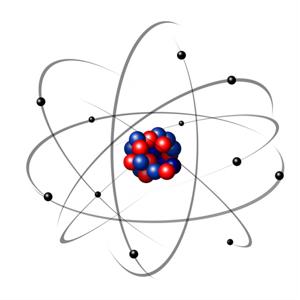Scientists are currently using the most powerful X-ray laser in the world to further their understanding of fusion processes.
The U.S. Department of Energy is the proud owner of the Linac Coherent Light Source, the globe's most powerful X-ray laser. Researchers at the lab have worked over the past few years to craft the world's first atomic X-ray laser pulse, and to superheat and manipulate a cluster of matter heated to approximately 2 million degrees Celsius.
Scientists are hoping the X-ray laser pulse can help them understand how biological molecules function. What's more, they contend they are gaining insight into the processes of nuclear fusion through their work with superheated molecules. Engineers are conducting the experiments at DOE's SLAC National Accelerator Laboratory.
Popular Science reports that the researchers first use the Linac Coherent Light Source (LCLS) to flash-heat a miniature piece of aluminum foil, which ultimately results in the creation of what is known as hot dense matter. The laser is so powerful that it only takes approximately one-trillionth of a second to heat the aluminum to 2 million degrees Celsius, or 3.6 million degrees Fahrenheit.
Scientists assert that by developing a more comprehensive understanding of the process, they could one day understand and potentially recreate the process of nuclear fusion. Researchers have struggled to effectively incite nuclear fusion in laboratory settings, but SLAC's X-ray is enhancing their knowledge of how hot dense matter not only forms, but also acts.
"The LCLS X-ray laser is a truly remarkable machine," Oxford University postdoctoral fellow and study lead Sam Vinko said in a statement. "Making extremely hot, dense matter is important scientifically if we are ultimately to understand the conditions that exist inside stars and at the center of giant planets within our own solar system and beyond."
Vinko, who along with his fellow researchers published the study's findings in the journal Nature this week, acknowledged that scientists have long been able to create plasma from gases. However, the sheer power of the LCLS has enabled them to do the same at solid densities, a feat conventional lasers are incapable of achieving, according to study co-author Bob Nagler.
"The LCLS, with its ultra-short wavelengths of X-ray laser light, is the first that can penetrate a dense solid and create a uniform patch of plasma – in this case a cube one-thousandth of a centimeter on a side – and probe it at the same time," Nagler said.
The central part of the frame contains the holder for the material that will be converted by the powerful LCLS laser into hot, dense matter. To the left is an XUV spectrometer and to the right is a small red laser set up for alignment and positioning.
Aside from their work studying hot dense matter, scientists at SLAC also have developed the first atomic-scale X-ray laser. That research is part of a separate ongoing study at the laboratory that could result in the creation of an altogether new field of atomic imaging, experts say.
Researchers from the Lawrence Livermore National Laboratory used the LCLS to essentially inject energy into a group of neon atoms. Their goal, according to the group's findings, was to lase at shorter wavelengths, an exceedingly difficult endeavor as achieving such shortened wavelengths requires atomic manipulation. Using the LCLS, the scientists were able to shift electrons to higher energy states, which ultimately prompted a surge of X-ray emissions.
The group essentially was able to create a miniature version of an atomic-sized laser. With its shortened pulses and improved lighting quality, the atomic laser could be used to further scientists' understanding of atomic-scale processes, according to the researchers.
The LCLS is located in Palo Alto, California, and is massive in scope, encompassing a distance of more than one mile. It is far and away the most technologically advanced X-ray laser on Earth, according to scientists: it is capable of generating bursts of X-ray radiation that are more than one billion times brighter than any other laser source.


0 comments:
Post a Comment